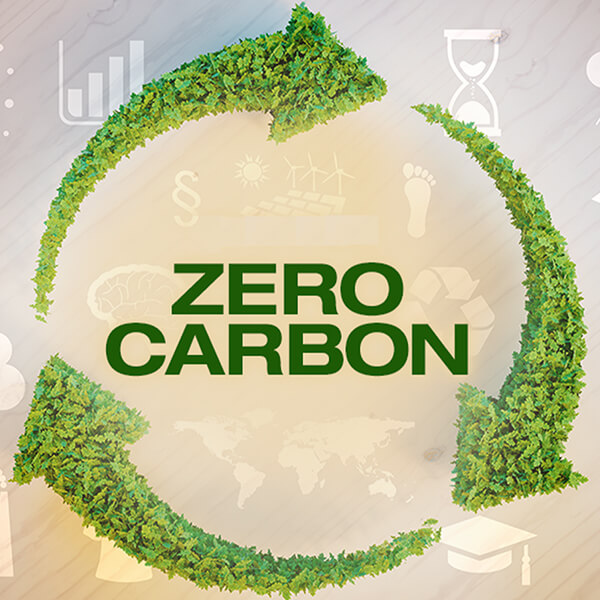How we protect the environment
We are changing the tide!
We do not pretend to show off and portrait ourselves as the most environmentally friendly crystal company in the world.
However, to the best of our knowledge (as of May 2022), we are so far the world´s only crystal company that has calculated its carbon footprint. The goal of this is to set the baseline from which we can start improving in order to become the most environmentally friendly crystal company in the world.
And we are offering you, to partner with us and sell carbon-neutral, environmentally friendly AND ethically mined and produced crystal products to your customers.
We are aware of the fact, that by starting this process, we are already claiming a leadership position in the global crystal industry and we are proud to do so.
Below we will share with you:
- What we already achieved
- What we still struggle with
- How you and your crystal business can take part
Our companies´ environmental action:
Partner with us and offer your clients environmentally friendly and carbon-neutral crystal products:
1.) Protect species diversity and protect the integrity of land habitats:
Mining is an extraction industry for non-renewable resources and therefore crystal mining is inherently unsustainable, because mining exploits a resource till it´s gone and even though our planet is in a constant process of creating crystals, we know that this occurs in geological timescales of millions of years, being therefore beyond the timescale human beings can plan with.
Additionally to being non-renewable the extraction of underground resources necessarily impacts the biosphere, meaning the living habitat on the land surface and all too often mining leads to the complete destruction of such local habitats. Therefore a responsible crystal business must make a decision about what is possible and what should not be done.
Luckily for our business most mining operations are located on the westerns slopes of the Andes and in the coastal desert of Peru, being one of the driest deserts on earth with very little plant or animal life to be harmed and with nearly no underground water bodies to be contaminated. Additionally gemstone and crystal mining is not using any chemicals, with dynamite, being used for underground mining, being the only chemical used. Environmental impacts therefore are from a start relatively low to very low for Peruvian crystal mining operations.
What we do:
- We are not mining, taking part in or buy resources from any mining operation that is located in the Peruvian cloud forest or rainforest, being those extremely important ecosystems of high biodiversity (plant and animal species). Having already overstepped the planetary boundaries for species diversity any plant and animal as well as natural habitats must be protected. Therefore:
- We are not buying gold from rainforest mining for our jewelry
- We are not sourcing amazonite and we are not having amazonite products in our stock (amazonite mines are located in the rainforest).
- Our own crystal mining operations in the foothills of Lima department cannot really be called “mining” as we are not using any dynamite at all. All crystals are found in smallest reserves (geode-like bubbles) at the surface, being distributed over a huge desert terrain. So we are actually more nomadic collectors than miners. We are digging into the surface with hand tools for maximum half a meter. Our basecamp is a temporary tented camp and we have a Puma strawling in between the tents at night. Needless to say it is a very exciting experience to hear and feel one of these last big predatory cats being so close. We are making sure that all camping trash is collected and transported out of the area.
- Last but not least we are now starting a rainforest re-forestation project that will be financed with funds raised from crystal sales in order to recover some of the mega diverse habitat that has been lost and will provide new habitat to hundreds of plant and animals species. Given the fact that we as humans have already overstepped the planetary boundary of biodiversity by already having initiated a species mass extinctions at global scale, recovering habitat will surely be one of the most important actions in order to support planetary sustainability. Please read more about how you can support this project by buying a carbon-positive crystal.
2.) Reduce freshwater use:
The use of water in lapidary production is a huge environmental component. All cutting, shaping and polishing tools are water cooled. Additionally, the cleaning of the machines and the entire facility from stone dust, as well as cleaning the stones themselves, all this consumes a huge amount of water.
What we do:
-
- In 2021 we changed our water system, by building a simple but effective water recycling system for our lapidary machines. By doing so we were able to reduce our water consumption for the last three months of 2021 in 75% in comparison to the months before. The full effect of such huge water savings will be reflected in a further reduced carbon footprint by the end of 2022.
3.) Reduce environmental contamination:
Environmental contamination is everywhere and happens at any stage of the production process in any industry. Making the greatest effort to reduce it, is a constant process on all levels of a company.
What we do:
- We are collecting all trash and waste being generated during our temporary crystal mining operations in the Peruvian desert foothills and transporting it out of the area in order to deposit it in designated garbage landfills near the capital.
- We are not burying trash in the natural environment
- Burning household trash is a common activity of Peruvian people seen on a daily basis all over the country. However burning plastic trash at low temperature creates the most poisoness chemical of all: dioxin. We are therefore refraining from any trash burning during our mining operations and we are educating our staff about why this should not be done, creating this way environmental consciousness. We are motivating our staff to educate others.
- In our lapidary plant we are collecting glass, metal scrap, plastics and paper in separated waste bins and sell those materials to recycling companies. The small profits being generated by this will be invested in a rainforest reforestation project. Sadly in Peru we do not have composting initiatives so we still cannot find a way to recycle organic matter, but we are constantly evaluating ways to incorporate this element in the future.
- Crystals have to be cleaned from oxide in acid baths. In Peru we do not have plants or facilities that would accept chemical trash. The common way to deal with old acids in all other lapidary workshops in Peru is to simply flush the acids down the drain. As these acids have not been treated before, discarding them will harm water life when reaching the ocean as they cannot be treated in the basic Peruvian wastewater treatment facilities. We are, to the best of our knowledge, the only lapidary workshop in Peru that bothers about making the effort to actually treat and neutralize our old acids before discarding them. We are therefore making sure that those neutralized acids will have the lowest harmful effects possible.
- Lapidary work leaves you with lots of powder and mud from the cutting and polishing machines. This mud is not contaminated as it is generated mechanically and the machines are cooled with water only. Nevertheless we are collecting and drying this mud and then discard it on designated construction waste landfills.
- Reusing is better than recycling, as recycling is an additional process of manufacturing while reusing is not. We are reusing materials whenever possible. When moving our workshop in 2020 we had to retrieve dozens of kilos of wiring from the existing infrastructure. We did manually retrieve all the copper wiring from those cables and use this copper now for producing jewelry with our stones. We also reused 90% of the wood that was retrieved from the existing infrastructure when adapting it to our use.
- In our wholesale branch we are reusing packaging materials from other companies (drums, cartoon boxes, paper for cushioning). It does not look pretty but reduces the environmental impact of such packages to zero.
- In our retail branch we are using recycled packaging.
Our challenge: Bubble Wrap
Crystals are products that tend to break easily. Sadly in Peru we have no access to alternative packaging materials that have the same protective success than bubble wrap. All these great new alternative packaging materials made from recycled paper, mushrooms, seaweed etc. etc. are not available in Peru. If we wanted to import such materials, this would greatly increase shipping costs, which is something the regular consumer simply would not be willing to accept. So here in Peru it comes down to newspaper or bubble wrap. But newspaper just does not have the same cushioning power as bubble wrap and using it would greatly increase breakage during transport as well as it would increase the weight of the package and therefore again shipping cost.
What you can do to help us
4.) Reduce climate change:
By now there is no room left for doubt about the fact that human induced climate change is going to be the most dramatic natural force changing the face of our planet and gravely affecting not only the human species existence but the entire planets biodiversity. Science leaves it crystal clear to us: If the global human society on all its levels does not reduce the use of fossil fuels in 50% over the course of the next 8 years we will pass the planetary climate change boundary and march into unknown high risk terrain that will harshly impact the quality of life of all future generations, meaning: our children, theirs and so forth.
Put in front of such a daring challenge there is not a single day left to loose for all of us to make a change. Here is what we do and how you can help:
Mining, transport, lapidary work and final shipping to your home, all these steps carry environmental impacts caused by the use of water, energy and other resources. Gemrock Peru is the first crystal company measuring its carbon footprint: Our carbon footprint in 2021 was 181.7 t of CO2 emissions.
Based on this analysis we now can initiate specific measures in order to reduce this footprint a little more each year. However the only way to reach zero carbon emissions is to plant trees in other places, which extract CO2 from the atmosphere and this way do eliminate the emissions caused by us.
Therefore we are now offering you the unique opportunity to buy a carbon-neutral crystal.
We are also offering you, to calculate your companies´ footprint using our calculation method. This can be done from a distance based on the information you will provide us with in order to complete such a calculation.
If you want to become a carbon neutral company too:
5.) Saving Energy:
Reducing energy use is still a mayor challenge for us. When moving into our new facilities we replaced all old light bulbs with LED lights, reducing this way the electricity for lighting in 90 %. However all our machines are running on electricity, of course. The only way we can see so far to reduce energy consumption is to use solar panels. However importing those panels is still much too expensive to make economic sense when competing with our cheap national energy grit, that it just is not affordable for us to do that.
The good news is that Peru´s energy mix consists of 60% hydroelectricity, 5 % alternative energies and only 35 % of our national energy is produced with fossil energy which makes Peru´s energy production to be one of the cleanest ones globally.
Nevertheless we are in a constant search for ideas how to reduce our energy consumption and will apply those ideas whenever possible.
So far, the best way to act is to plant trees and compensate the CO2 emissions. You can partner with us to become a carbon neutral crystal business:
Gemrock Peru: Social and Environmental Responsability
Why choose Gemrock?
All our workers are hired under formal working contracts and provided with all legally required health, labour and retirement benefits.
We are going to great length to find the right process for each type of stone in order to achieve the best possible polish.
During our lapidary production we have a rigurous review process in place that filters out any product that shows the tyniest scratches.
We strive for perfect shapes in all our products, even if this means an extreemly high effort in carving.
Even if handmade piece by piece, we do offer standartized sizes that do not vary more than 2 to 3 mm. This improves the pricing process of our clients.
All our workers are hired under formal working contracts and provided with all legally required health, labour and retirement benefits.
We are going to great length to find the right process for each type of stone in order to achieve the best possible polish.
During our lapidary production we have a rigurous review process in place that filters out any product that shows the tyniest scratches.
We strive for perfect shapes in all our products, even if this means an extreemly high effort in carving.
Even if handmade piece by piece, we do offer standartized sizes that do not vary more than 2 to 3 mm. This improves the pricing process of our clients.
We are constantly improving our production process in order to achieve shorter production times while maintaining quality. Also we are trying to save water and energy.
Get in Touch
+51 994104206
gemrockinternational@gmail.com


